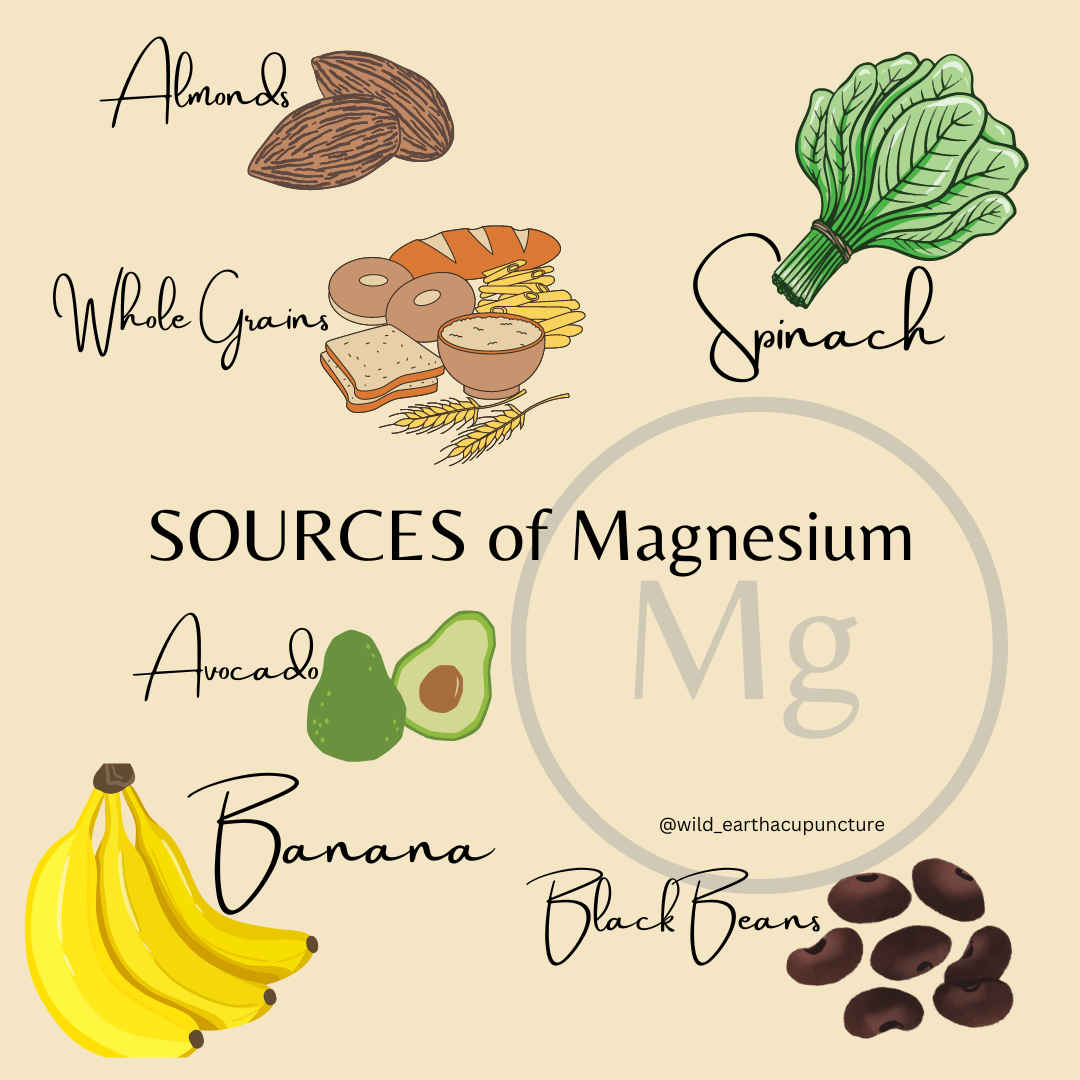Types of Magnesium; Benefits and Uses
A Comprehensive Guide to Different Types of Magnesium: Uses, Benefits, and Contraindications
What is Magnesium?
Magnesium (Mg) is an essential mineral that plays a crucial role in various bodily functions, including muscle, energy production, metabolic, and bone health. Magnesium is a vital nutrient in different forms, each with its unique characteristics and functions. About 60% of magnesium in the body is found in the bones and teeth, and 40% is found in the muscles.
This article will explore various types of magnesium, their uses, benefits, and potential contraindications. Not all types of magnesium are equal; their absorption rates and target tissues vary, and their impact on the body also differs. I hope this article clarifies what type of magnesium would be best for you.
Regular and adequate consumption of magnesium is vital to avoid deficiency.
Magnesium is a cofactor in over 600 enzymatic reactions and plays a crucial role in the structural integrity of proteins, nucleic acids, and mitochondria.
The absorption of magnesium is an intricate process influenced by an individual's magnesium levels, while kidney function predominantly regulates its excretion.
Which Magnesium Do I Choose?
Magnesium plays a crucial part in our body's operation and function daily. One study published in the Journal of American Family Physicians states that “Research has shown that the mineral content of magnesium in food sources is declining and that magnesium depletion has been detected in persons with some chronic diseases. This has led to an increased awareness of proper magnesium intake and its potential therapeutic role in several medical conditions. Studies have shown the effectiveness of magnesium in eclampsia and preeclampsia, arrhythmia, severe asthma, and migraine. Other areas that have shown promising results include lowering the risk of metabolic syndrome, improving glucose and insulin metabolism, relieving symptoms of dysmenorrhea, and alleviating leg cramps in women who are pregnant”.
Choosing the type of this vital electrolyte for your specific purpose can help create a better therapeutic response. The lower the magnesium level in your body, the more the mineral can be absorbed. Many people are at risk of magnesium deficiency, and low magnesium levels may be involved in various health conditions, such as heart disease, type 2 diabetes, bone conditions such as osteoporosis, and migraines. A high-quality magnesium supplement might be just what you need to start feeling your best.
In my clinic, I am often dealing with pain conditions from injuries, headaches, poor sleep, etc., and while I feel a proper diet and adequate movement can help with many ailments, supplementation is often needed to help further increase healing. Magnesium is a great supplement for a wide variety of reasons, but picking the correct form of magnesium can increase its benefit.
Types of Magnesium
Understanding the diverse types of magnesium is essential because each variant has distinct effects on the body. The significance lies in the fact that various magnesium compounds offer unique benefits and absorption rates. Being aware of these differences allows individuals to tailor their magnesium intake to specific health needs, ensuring optimal impact on bodily functions.
Incorporating magnesium into your health regimen can have numerous benefits, but it's crucial to choose the right form based on your specific needs. Always consult with a healthcare professional before starting any new supplement regimen, especially if you have pre-existing health conditions or concerns about potential contraindications. Understanding the various types of magnesium and their uses empowers individuals to make informed decisions to support their overall well-being.
1. Magnesium Citrate
Magnesium citrate serves various purposes; this form is magnesium bound to citric acid. Its primary use is widely employed as a laxative and is effective in the relief of constipation. Additionally, it is often recommended as a remedy for managing heartburn and acid indigestion. This is one of the most widely popular forms of magnesium, most likely because it is inexpensive and easily absorbed. Since it is easily absorbed it can help to raise magnesium levels in the body, great for magnesium deficiency. The benefits of magnesium citrate extend to supporting bowel regularity, aiding in the alleviation of constipation, and potentially enhancing the absorption of essential minerals like calcium. It is a great choice for individuals with rectal or colon issues but is not recommended for folks who have loose bowel movements.
Main Uses:
Commonly used as a laxative to relieve constipation.
May also help manage heartburn and acid indigestion.
Benefits:
Supports bowel regularity and helps alleviate constipation.
May enhance the absorption of other minerals, such as calcium. It’s mainly used to raise magnesium levels and treat constipation.
Can be beneficial for migraine headaches.
2. Magnesium Glycinate
Magnesium glycinate is a popular choice due to its gentle and very bio-available form, making it a go-to option for many. This form is comprised of magnesium bound with glycine, a non-essential amino acid. Its primary application lies in the support of overall muscle and nerve function. Noteworthy benefits of magnesium glycinate include its reduced likelihood of causing digestive discomfort compared to other magnesium forms. It is renowned for its calming effects, making it particularly suitable for individuals dealing with headaches, stress, anxiety, or insomnia. It is unlikely to cause diarrhea, making it a good option for longer-term use, such as correcting a deficiency.
Main Uses:
Often chosen for its gentle and easily absorbed form.
Commonly used to support overall muscle and nerve function, great for pain relief.
Mood support, headaches, blood pressure regulation.
Benefits:
Less likely to cause digestive discomfort compared to other forms of magnesium.
Known for its calming effects, it is suitable for individuals with stress, anxiety, or insomnia.
3. Magnesium Oxide
Magnesium oxide is one of the most common forms of magnesium, but it is non-chelated and has a poor absorption rate compared to other forms. It serves a purpose as it is commonly employed as an antacid to alleviate symptoms of heartburn and indigestion. The benefits of magnesium oxide include its cost-effectiveness and widespread availability. It is crucial to be mindful of potential contraindications, as magnesium oxide may induce gastrointestinal discomfort and diarrhea in certain individuals.
Main Uses:
Used as an antacid to relieve symptoms of heartburn and indigestion.
Often used for constipation and used as a laxative.
Benefits:
Cost-effective and widely available.
The body doesn’t absorb magnesium oxide well, so it isn’t a good choice for those who need to raise their magnesium levels.
4. Magnesium L-Threonate
Magnesium L-threonate stands out for its recognized potential cognitive benefits, making it a notable choice for individuals seeking cognitive enhancement. Its promotion often revolves around its unique ability to effectively cross the blood-brain barrier, a crucial aspect for brain-related applications. Its application is less likely to cause gastrointestinal side effects compared to other forms of magnesium.
Main Uses:
Known for its potential cognitive benefits and memory support, and may be beneficial for conditions such as depression, Alzheimer’s, and memory loss
Often promoted for its ability to cross the blood-brain barrier.
Benefits:
May support cognitive function and memory.
Less likely to cause gastrointestinal side effects.
5. Magnesium Sulfate- Epsom Salt
Magnesium sulfate, widely known as Epsom salt, serves dual purposes in external and medical applications. Externally, it is commonly employed in baths for its ability to induce muscle relaxation, providing relief for sore muscles and promoting an overall sense of relaxation. In medical settings, magnesium sulfate may be administered intravenously to address severe magnesium deficiency, a critical intervention that requires professional oversight. Despite its benefits, caution is necessary, as oral ingestion of Epsom salt can lead to gastrointestinal distress. Intravenous use should only be undertaken under the strict supervision of healthcare professionals to ensure its safe and effective application in clinical settings. Not a good source of dietary magnesium.
Main Uses:
Mainly used externally in baths for muscle relaxation.
Good choice for topical stress relief and sore muscles.
It may be administered intravenously in medical settings to treat magnesium deficiency.
Benefits:
External use may soothe sore muscles and promote relaxation.
Intravenous use addresses severe magnesium deficiency in a clinical setting.
6. Magnesium Gluconate
Magnesium gluconate is recognized for its role in promoting overall heart health by supporting proper muscle and nerve function. This form of magnesium is easily absorbed by the body, making it an effective supplement for individuals seeking to address magnesium deficiency or support their daily nutrient intake. Magnesium gluconate may also contribute to bone health and energy production.
Main Uses:
It plays a crucial role in supporting overall muscle and nerve function.
Benefits:
This form of magnesium is known for its easy absorption in the digestive tract.
May help with joint pain
7. Magnesium Taurate
Magnesium taurate stands out as an optimal magnesium supplement, particularly for individuals with cardiovascular concerns. Renowned for its efficacy in preventing arrhythmias and safeguarding the heart from damage associated with heart attacks, magnesium taurate is a preferred choice in addressing cardiovascular issues. This compound is characterized by its high absorption rate, facilitated by the synergistic effect of magnesium and taurine in stabilizing cell membranes. Magnesium taurate distinguishes itself by lacking laxative properties, offering a well-tolerated option for those seeking cardiovascular support without gastrointestinal side effects. Its targeted benefits and its easy absorption choice for those looking to address magnesium deficiency with a focus on cardiovascular well-being. Magnesium taurate is often favored for its cardiovascular support, contributing to healthy heart function and blood sugar and pressure regulation.
Main Uses:
Cardiovascular Health
Benefits:
High absorption rate.
Minimal gastrointestinal side effects.
8. Magnesium Chloride
Despite its lower elemental magnesium content of approximately 12 percent, magnesium chloride boasts a high absorption rate, making it a notable choice for individuals seeking to treat low magnesium levels or employ its detoxification benefits for cells and tissues. Recognized as the preferred form of magnesium for detox purposes, magnesium chloride plays a crucial role in facilitating the removal of toxins from the body. Furthermore, the chlorine component contributes to supporting kidney function and has the potential to enhance a sluggish metabolism. This makes magnesium chloride a valuable supplement for those aiming to promote cellular and tissue detoxification while harnessing additional metabolic and renal benefits. It is also a great choice for elevated cholesterol, depression, type 2 diabetes, oral detoxification, and low stomach acid. It also absorbs well through the skin if applied topically.
Main Uses:
Great choice to help detoxification
Popular for topical use
Benefits:
Readily absorbed through oral administration and is beneficial for the treatment of heartburn, constipation, and low magnesium levels.
Topical application may alleviate muscle soreness
Does not contribute to an increase in magnesium levels in the body.
9. Magnesium Malate
Magnesium malate, a compound of magnesium and malic acid, is valued for its potential health benefits. This form of magnesium is commonly utilized for addressing conditions related to muscle pain and fatigue. Magnesium malate is very well absorbed in your digestive tract, and is seemingly more gentle on the digestive system, having less of a laxative effect than other forms of magnesium.
Main Uses:
Magnesium malate is often employed to alleviate symptoms of fibromyalgia and chronic fatigue syndrome.
It may be utilized to support overall muscle health and mitigate muscle pain.
Benefits:
Enhanced bioavailability, facilitating efficient absorption in the body.
The malic acid component may increase energy levels and improve exercise performance.
10. Magnesium Hydroxide
Magnesium hydroxide, often recognized as an inorganic compound, has specific applications and benefits within the realm of health and wellness, and benefits have been seen for GERD, or acid reflux, and osteoporosis.
Main Uses:
Widely employed as an antacid to neutralize stomach acid and alleviate symptoms of indigestion.
Magnesium hydroxide is commonly utilized as a laxative to relieve constipation.
Benefits:
Acts as an effective antacid, providing relief from heartburn and indigestion.
Its laxative properties can aid in promoting bowel regularity and alleviating constipation.
11. Magnesium Trisilicate
Magnesium trisilicate, a compound formed from magnesium oxide and silicon dioxide, finds its application primarily in the pharmaceutical industry as an antacid. Known for its ability to neutralize excess stomach acid, magnesium trisilicate is a common ingredient in antacid formulations aimed at alleviating symptoms of indigestion and heartburn. As it reacts with gastric acid, it forms a gel-like substance that helps soothe and relieve discomfort associated with acidity. While its use is effective in providing short-term relief, it is essential to adhere to recommended dosages and consult healthcare professionals for prolonged or frequent use due to potential interactions and side effects. It has as a slow onset and long duration of activity in the body. Some studies show it is helpful for those with GERD but it is not absorbed well.
Main Uses:
Help with stomach acid
Indigestion and heartburn
Benefits:
Beneficial for gastrointestinal complaints
Epsom Salts are a common form of Magnesium.
Food Sources of Magnesium
Often people need to supplement with Mg to get the appropriate amount to make a therapeutic change, but it is important to know that there are various food sources of magnesium as well such as;
Green leafy vegetables
Nuts
Legumes
Whole grains
Meats and Fish
Sign up to receive a discount on high-quality supplements
*Disclaimer: These statements have not been evaluated by the Food and Drug Administration. There are no financial ties to any supplement companies, pharmaceutical companies, or to any of the products mentioned in this post. This post is not meant to treat, cure, prevent, or diagnose conditions or diseases and is meant for educational purposes. As always, please consult your doctor before trying any new treatments or supplements.
References
Guerrera MP, Volpe SL, Mao JJ. Therapeutic uses of magnesium. Am Fam Physician. 2009;80(2):157-162.
Wilhelm Jahnen-Dechent, Markus Ketteler, Magnesium basics, Clinical Kidney Journal. 2012;(5):3–i14.


































This article explains the transformative power of the CHIRP Wheel, a unique spinal relief tool designed to prevent excess pressure on the spine while targeting muscles on both sides of your neck and back. It also offers simple steps for a safe and effective experience!